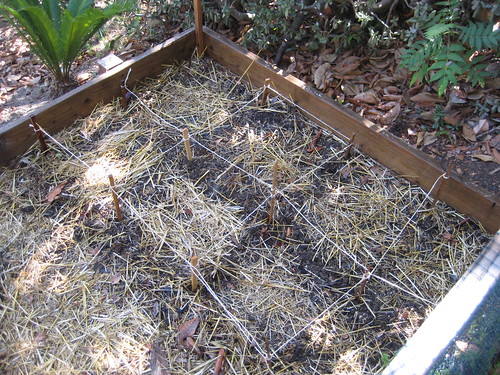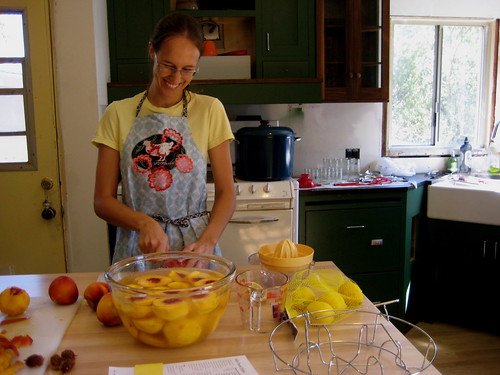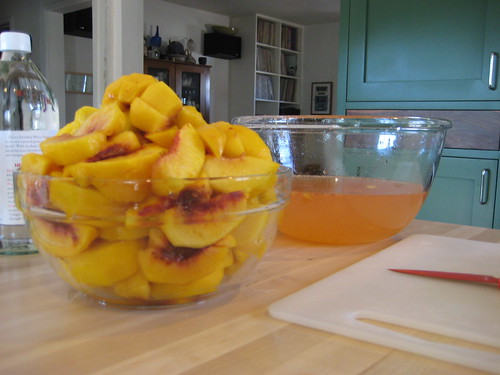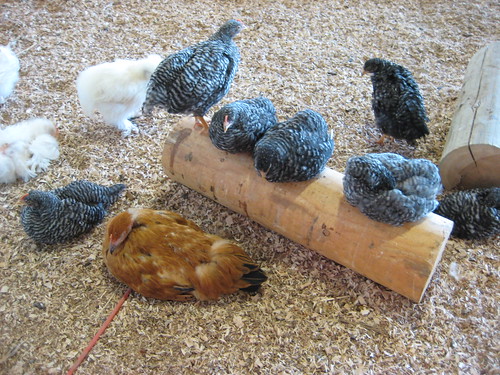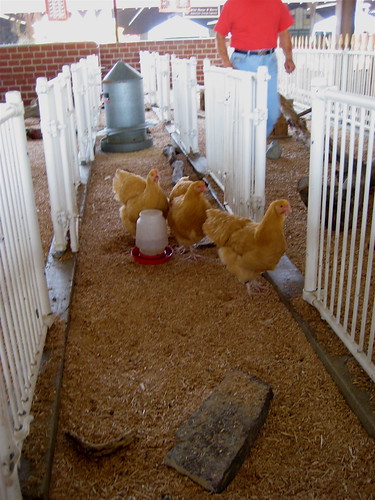
The little green plants poking up through the leaves in the photo above are California native wildflowers, although I can't tell you exactly which varieties. I purchased a whole bunch of seeds from the Theodore Payne Foundation website a couple of months ago. After browsing through their giant catalog of seeds--both annual and perennial--and using Google image search to figure out what the flowers would look like, I ended up ordering 14 different types. I know, I went kind of overboard. I tend to do that with seed catalogs. Luckily, seeds are fairly inexpensive.
A few packets of Theodore Payne wildflower seeds went into my seed bombs, and the rest were scattered all over the front and back yards. The front yard wildflowers probably have a better shot, since they don't have to contend with curious chickens and their scratching claws. But, I think I spread my backyard planting locations around enough that I should get a pretty bunch of blooms all over both yards this Spring. I hope so, anyway.
The wildflowers will bring in native bees, butterflies, hummingbirds and other pollinators, which will help my fruit trees and garden plants. And, of course, they'll provide a fun Springtime burst of color. Once they've finished blooming, most of the wildflowers should reseed themselves, so I wont have to go on another seed spree next Fall.
If you're interested, it's not too late for you to plant your own wildflowers. The real rain should hit Southern California in January and February, so if you scatter some seeds soon, they will still get a good start. If you don't want to order online, most garden stores sell California Poppy and lupine seeds, both of which are natives that grow well in Los Angeles.





























